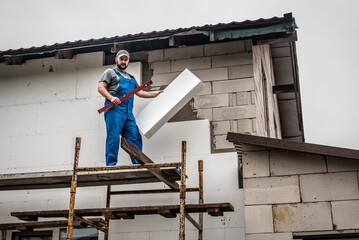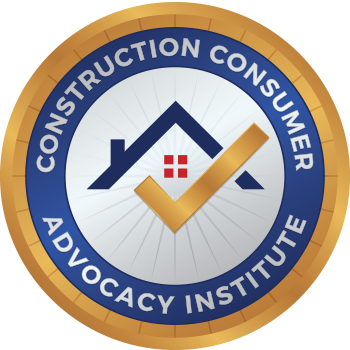Construction Consumer Advocacy Institute

Foam Board Insulation
Part 1
We are starting the first of a series on insulation. Energy cost is going up and we need to do everything we can to help our family budgets and insulation can help us on our heating and cooling cost. The problem is that there are so many types of insulation that it’s confusing. That is why we at the Construction Consumer Advocacy Institute have been established. To educate us on everything you need to know.
If you ever have any questions, please remember that you can always contact us by email [email protected]
Keeping your home or property comfortable year-round requires effective insulation. The right insulation not only keeps your family warm during winter months but also helps you save on energy costs. Among the various insulation types available, foam board insulation is an increasingly popular choice for homeowners, DIY enthusiasts, and construction professionals alike. In this blog, we explore what foam board insulation is and why it is an excellent option for your insulation needs.

The Pros and Cons of Expanded Polystyrene Insulation
Have you ever wondered why some buildings have foam boards on their walls? Well, you might be looking at an expanded polystyrene insulation. This insulation material has been widely used in construction for decades due to its excellent insulation properties. But like any other material, expanded polystyrene insulation has its pros and cons. So, in this blog, we will explore the advantages and disadvantages of using this insulation material.
First, let’s discuss the pros of expanded polystyrene insulation. One of the biggest advantages of this material is its excellent insulation properties. Expanded polystyrene has a high R-value, which measures the insulation’s resistance to heat transfer. This means that buildings with this type of insulation maintain a consistent temperature, reducing heating and cooling costs. Additionally, expanded polystyrene insulation is lightweight and easy to install. It can be cut and shaped to fit any size or shape of the wall, making it perfect for renovation projects.
Another advantage of expanded polystyrene insulation is its moisture resistance. Unlike other insulation materials, this insulation product does not absorb moisture, making it ideal for humid environments. Further, expanded polystyrene is durable and can withstand harsh weather conditions like wind, rain, and snow. Builders often choose this insulation material for exterior walls, roofs, and foundations to protect the home from extreme weather conditions.
On the other hand, there are cons to be aware of when it comes to expanded polystyrene insulation. One disadvantage is that it is not eco-friendly. The production of expanded polystyrene insulation releases toxic greenhouse gases. Additionally, it can not be recycled and does not decompose over time. This means that it can take up valuable space in landfills and harm the environment.
Another con is that expanded polystyrene insulation is combustible. It has a low fire-resistance rating and can melt or burn when exposed to high heat. This can cause serious safety hazards for homeowners. Additionally, because this material is so flammable, building codes require that it has to be covered by a fire-resistant material.

Conclusion:
In conclusion, expanded polystyrene insulation has many advantages that make it an excellent choice for homeowners. It has excellent insulation properties, is easy to install, and is durable. However, it has some disadvantages, including its inability to decompose and being a fire hazard. Before deciding on using this insulation material, it’s important to weigh both the pros and cons, considering your environmental impact, lifestyle, and budget. Ultimately, the choice of insulation material will depend on your unique needs and preferences. R_ Value 3.6 Per Inch
